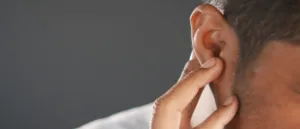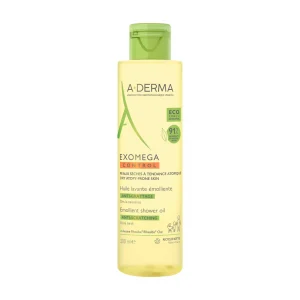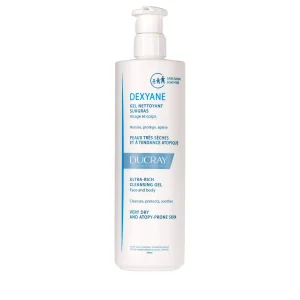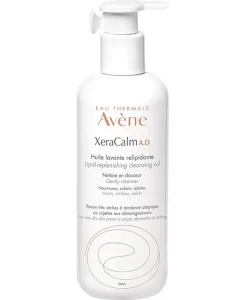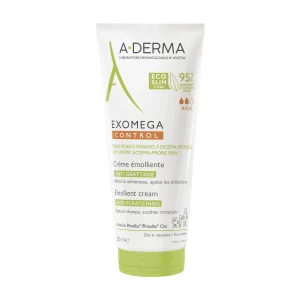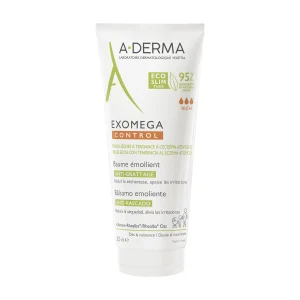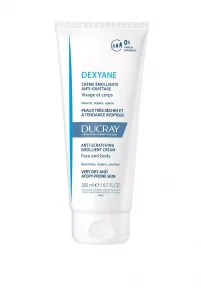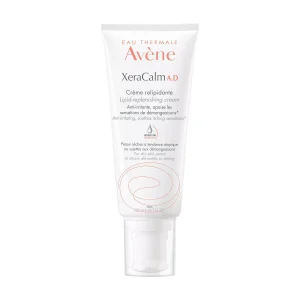
Eczema, also called atopic dermatitis, is a common skin condition that causes redness and itching on the skin. It can develop just about anywhere, including on your ear and in your ear canal. There are several types of eczema, identified by their underlying cause. Most can affect your ears in addition to the rest of your body. Continue reading this article featuring dermatologist Dr. Naglaa Mohamed to learn more about the different types of ear eczema and how to treat them.
What are the different types and causes of ear eczema?
Different types of dermatitis can affect the ears. Here are the common types of ear eczema and their causes:
- Seborrheic dermatitis: A chronic form of eczema affecting areas with oil-producing glands. The most likely cause is an immune reaction to a type of yeast on the skin.
- Atopic dermatitis: Another chronic form of eczema that can be linked to asthma and hay fever. The cause can be a skin barrier dysfunction, and food sensitivities can also trigger symptoms.
- Contact dermatitis: This is a skin reaction to various chemicals or metals. On the ears, it is often caused by contact with earrings or cosmetics that people use on the surrounding hair. It can also be a reaction to topical antibiotics.
- Infectious Eczematoid Dermatitis (IED): This dermatitis occurs as a result of discharge from an infected site, such as inside an infected ear.
In addition, in the elderly, eczema on the ear may be asteatotic eczema. The skin around the ear may become dry and scaly in response to temperature changes, humidity, excessive washing, and other environmental factors.
What are the symptoms?
The main symptoms of eczema are patches of skin that are :
- extremely dry
- red
- scaly
- itchy
- cracked
In the case of ear eczema, you may also notice a clear discharge from your ear.
These symptoms often get worse in very dry weather. You may also notice them more during the winter months when indoor heating makes the indoor air drier than usual.
Ear eczema can affect the skin of the ear as well as the area behind the ear and the crease between the earlobe and the face. In some cases, it can also affect the ear canal, which runs from the eardrum to the ear opening.
How is it diagnosed?
According to Dr. Naglaa Mohamed, ear eczema is common and you should consult your doctor for a diagnosis.
Your doctor can usually diagnose ear eczema by performing a basic examination of your ears. He or she may also use a light to look inside your ears to check for irritation of the external ear canal.
Depending on your symptoms and medical history, a biopsy may also be performed. This involves taking a small sample of skin cells from the affected area and examining it under a microscope. A biopsy of the skin tissue in your ear can help your doctor rule out similar conditions.
People may confuse ear eczema with other skin conditions that have similar symptoms, including:
- Psoriasis: Psoriasis and ear eczema are two different skin conditions. Dr. Naglaa Mohamed explains that the clinical picture is different in eczema, it is itchier than psoriasis.
- Acne
- Fungal or bacterial infections
- Lichen simplex chronicus
- Viral diseases
Keep reading to learn how to reduce the itching of eczema and prevent the signs of ear infection.
What is the treatment for ear eczema?
To get rid of ear eczema, it’s important to determine the cause. Try to determine what triggers or worsens your ear eczema and then avoid it. The goal is to reduce itching and discomfort and prevent further infections and flare-ups.
The following remedies can relieve your ear eczema:
1- Take a bath or shower with lukewarm water – not hot water. Gently wash your ears. Limit the time you spend in the water to less than 15 minutes.
2- Avoid using harsh soaps and cleansers around your ears, which can dry out your skin and make your symptoms worse.
Look for a gentle cleanser instead. You can wash the inside of your outer ear eczema with a cleanser designed for eczema-prone skin. Look for products labeled “fragrance-free”, “hypoallergenic” or “for sensitive skin”.
Here are some fragrance-free cleansers to look for:
A-Derma Exomega Control Emollient Shower Oil
Ducray Dexyane Ultra-Rich Cleansing Gel
Eau Thermale Avène XeraCalm A.D Lipid-Replenishing Cleansing Oil
3- Follow with a moisturizer. When you have eczema or atopic dermatitis, it is essential to use a moisturizer. Dry skin can often make eczema worse. Moisturizers retain water and create a barrier against things that can irritate your skin. There are many products to choose from, but not all are the same.
Moisturize your skin by using an ear eczema cream or ointment. Lotions are usually not as effective. Apply several times a day, including after your bath or shower.
Here are the best creams for eczema-prone skin to help you choose the one that’s best for your skin.
A-Derma Exomega Control Emollient Cream
A-Derma Exomega Control Emollient Balm
Ducray Dexyane Anti-Scratching Emollient Cream
Eau Thermale Avène XeraCalm A.D Lipid-Replenishing Cream
4- Avoid common allergens, including nickel, cobalt or copper earrings.
5- Wear a warm hat that covers your ears when outside in cold weather.
6- Take prescription medication. Your healthcare provider may prescribe steroid creams, pills, injections, or ear drops. Sometimes, if it’s moderate to severe eczema, Dr. Naglaa Mohamed says a very strong corticosteroid ointment may be beneficial.
With proper treatment, ear eczema should disappear within one to three weeks. However, no treatment can claim to eliminate the symptoms of ear eczema 100% of the time. You may experience flare-ups on or in your ears for the rest of your life. Once you know the cause of your flare-ups, you can prevent them from happening as often.
What are the signs of infection?
Over time, the dryness and irritation from scratching can cause cracks in your skin, which increases the risk of developing infected eczema. When this happens, wax, hair, and skin can build up in your ear canal, which can lead to ear infections or hearing problems. According to Dr. Naglaa Mohamed, ear eczema is serious because the patient is susceptible to developing bacteria or fungal infections.
Contact your doctor immediately if you notice
- pain in your ear
- yellow or green discharge from your ear
- unusual redness
- flu-like symptoms
If you develop infected eczema, you will probably need a combination of antibiotics and topical steroids to make your symptoms go away.
Summary
There are different types of ear eczema, including atopic dermatitis, contact dermatitis, and seborrheic dermatitis.
Ear eczema is annoying and embarrassing, and can be alarming if it impacts your hearing. Consult your healthcare provider as soon as you notice signs of ear eczema.
